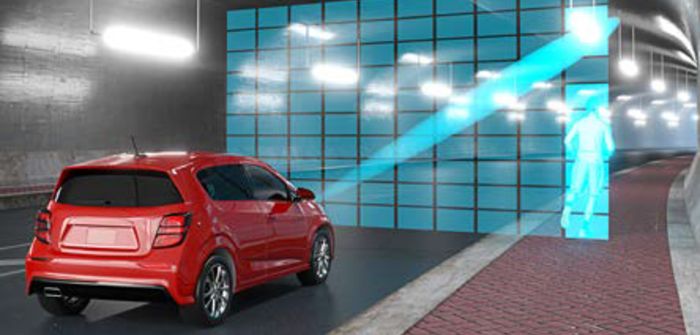Good as today’s radar and sensors are, further solutions are needed.
In the perfect driving scenario, streets would be free of pedestrians, garbage, cyclists, children playing, animals running free, and other potential hazards, including careless or distracted motorists. Unfortunately, the real world is complicated and hazardous, and so how can the automated car of tomorrow meet today’s safety requirements as well as expectations for a smooth riding experience?
The fact is that the current breed of sensors can fall short of doing the required job. Cameras have very high resolution, but they can only see out about 50m. Lidar can see faraway objects, but most of these platforms are expensive, big, and they cannot see in the dark or inclement weather. Today’s digital beamforming radar can see in the dark, but it has trouble distinguishing between objects.
The truth is, all sensor types are important. They exist for different reasons, providing different information so that the vehicle can operate smoothly and safely. Sensor technology for self-driving cars is big business, with the market for lidar alone reaching over US$975m in 2019 and the automotive radar market predicted to reach US$6.6bn by 2021. But what is the missing sensor today?
As we set out to build an analogue beamforming radar to address the inherent challenges of today’s radar technologies, our company took advantage of Ansys HFSS simulation software (part of the Ansys electromagnetic suite). As a graduate of their so-called Start-up Programme, we used the software to help develop our high-performance SPEKTRA radar.
SPEKTRA? Well, it combines analogue beamforming and beam steering with advanced digital signal processing to illuminate the driving field of view and detect all the objects on the roadway in high resolution. For those of you who aren’t familiar with the technology, beamforming uses a pencil-like beam with high gain for reaching far distances, along with lower side lobes to reduce the probability of false target detection. Beam steering is used to scan the field of view in milliseconds. Combined, beamforming and beam steering allow a high frequency radio signal beam to be shaped and pointed in a specific direction, focusing the radar signal into a narrow beam scanned across the scene. As a result, the SPEKTRA radar enables long-range detection and greater resolution.
When integrated with the AWARE AI platform, SPEKTRA quickly classifies objects, even those close to each other. SPEKTRA radar can detect and classify roadway objects up to about 330m and pedestrians up to about 200m. The system can perform accordingly as easily in the dark of night, dense fog, sandstorms or in heavy rain just as it does under clear conditions. Although we designed SPEKTRA to tackle the difficult, long-range applications associated with highly automated driving, including features like freeway pilot, traffic jam pilot and auto emergency braking, it is flexible enough to fit any sensor suite and can also be adapted to operate at shorter ranges.
Our engineers used Ansys HFSS at the start of the development process and then again to integrate components such as the radome and enclosure. By simulating SPEKTRA’s phased array antenna and PCB-type feed network to carry information to the antenna, predicted the behaviour of the beam at all angles and pushed the boundaries of radar specifications, including: narrow beam for high resolution, which allows SPEKTRA to detect adjacent targets at long range; low side lobes, to reduce the probability of false detections; high gain, for target detection at greater distances; and instantaneous illumination of the field of view to track the direction of all surrounding targets.
By using the adaptive meshing and 3D component features in Ansys HFSS, we avoided the risk of under- or over-meshing, which can lead to a loss of accuracy. HFSS includes multiple solvers within the same user interface and has a streamlined simulation model setup process, engineers could quickly begin the design process, which contributed to a shorter development cycle and lower costs.
Whether a product is as simple as a wooden dowel or as complex as an AI-integrated radar, how it will be manufactured is an important consideration throughout the product design and development process. Ansys HFSS enabled engineers to quickly weigh the advantages and disadvantages of multiple designs, envision the final product, and verify their hypotheses about performance and manufacturability.
Specifically, engineers wanted to be certain that the prototype design could withstand the variations required by PCB manufacturing tolerances and still deliver optimum performance. Adding the Ansys Optimetrics toolbox to Ansys HFSS provided statistical capabilities that enabled them to gauge the feasibility, flexibility, and robustness of the proposed prototype.
Metawave began delivering its first-phase proof-of-concept product to leading automakers and Tier 1 transportation providers last year.


